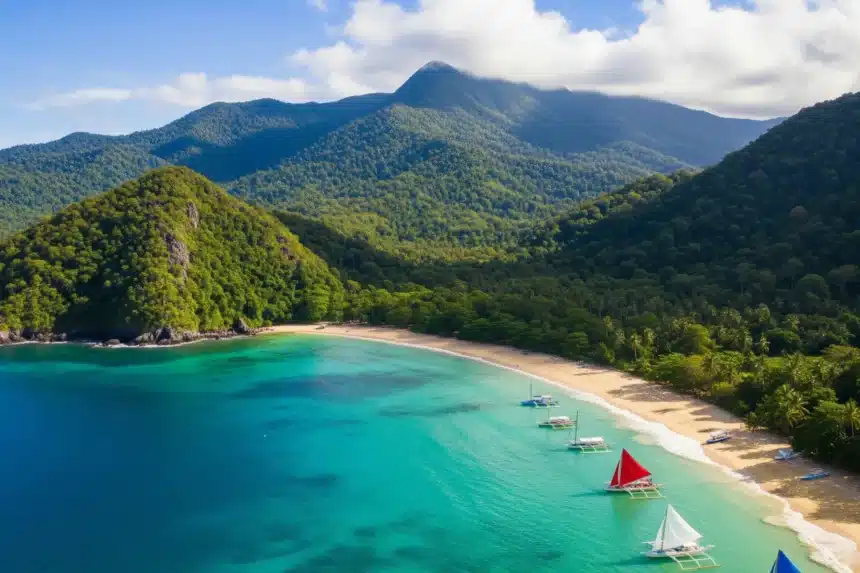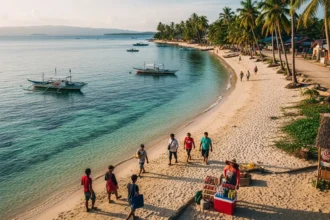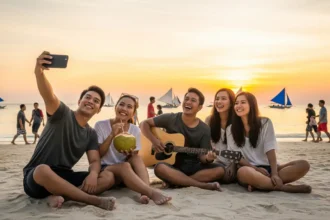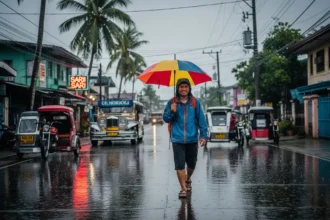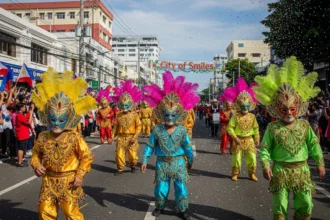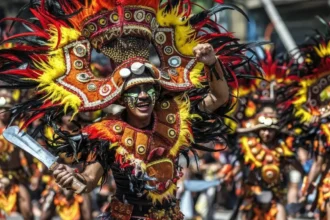🌴 Why Explore Mindanao Beyond the Usual Spots?
When travelers hear “Mindanao,” most picture Davao’s durian or Siargao’s world-class surf breaks. While both are must-visit, they represent only a fraction of what the island has to offer. Mindanao is the Philippines’ second-largest island, and within its vast landmass are untapped beaches, mystical lakes, ancestral lands, and centuries-old traditions waiting to be discovered.
For decades, many Filipinos and foreign tourists overlooked Mindanao because of misconceptions about safety or limited flight connections. But today, with improved infrastructure and growing eco-tourism initiatives, the island is opening its doors wider than ever. Here, you won’t just see places – you’ll feel them: in the warmth of locals, the taste of regional dishes, and the pulse of cultural dances that tell stories older than the nation itself.
Traveling beyond the usual routes allows you to experience authentic Mindanao. Imagine swimming in a crater lake formed by ancient eruptions, joining tribal festivals filled with vibrant chants and costumes, or hiking trails where the only sound is the rustling of leaves and distant birds. This guide takes you through the best things to do in Mindanao, beyond the well-trodden paths of Davao and Siargao.
🏖 Hidden Beaches You’ve Never Heard Of
While Siargao takes most of the beach spotlight, Mindanao has dozens of equally stunning, yet lesser-known, coastal escapes. These beaches don’t just offer sun and sand – they come with stories, traditions, and the kind of raw beauty that makes every trip memorable.
White Island (Camiguin)
A bare sandbar in the middle of the sea, White Island is a favorite day trip for travelers visiting Camiguin. With no trees, no huts, and no shade – just pure white sand – it offers uninterrupted views of Mt. Hibok-Hibok and the surrounding seas. At sunrise, the island glows with golden light, while at midday, the water surrounding it shifts between emerald and sapphire. It’s raw, simple, and exactly why it feels magical.
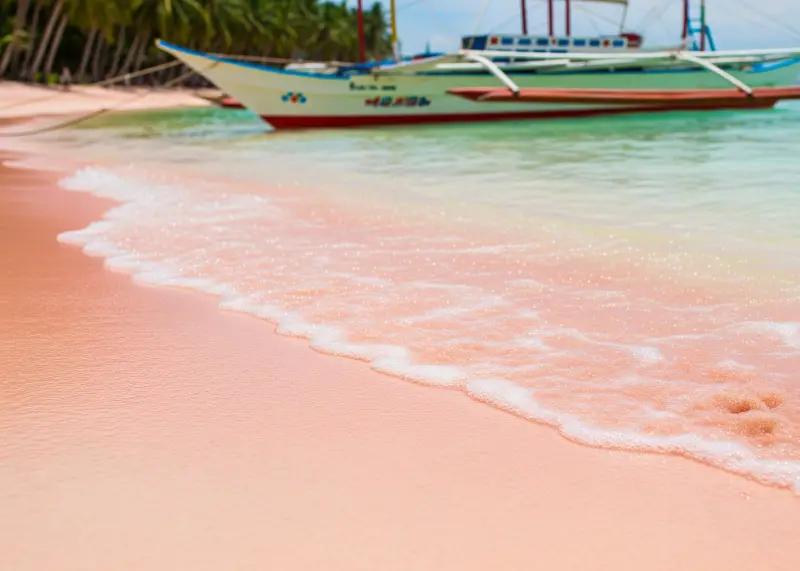
Sta. Cruz Island (Zamboanga City)
Known for its pink sand beach, Sta. Cruz Island remains one of the most unique coastal destinations in the Philippines. The pink tint comes from crushed red organ pipe corals that mix with white sand, creating a surreal shoreline. Beyond the beach, the surrounding lagoon is home to mangroves, stingless jellyfish, and thriving marine life. Visitors often combine a swim with a cultural side trip, where Sama Banguingui locals welcome guests with stories, food, and traditional weaving.
Dahican Beach (Mati, Davao Oriental)
Seven kilometers of crescent-shaped shoreline, Dahican Beach is loved by both adventurers and conservationists. It’s the heart of skimboarding culture in Mindanao, with local kids gliding over waves on homemade wooden boards. It’s also a nesting ground for hawksbill and green sea turtles, making it a blend of recreation and conservation. The vibe is laid-back and youthful – bonfires, surfing lessons, and the sound of waves replace the nightlife you’d expect in Boracay. For those who want raw energy mixed with raw beauty, Dahican is the place.
Gumasa Beach (Sarangani)
Often dubbed the “Boracay of the South”, Gumasa Beach boasts long stretches of powdery white sand and turquoise waters. But unlike Boracay, it remains quiet and crowd-free, perfect for travelers seeking solitude. Every May, the SarBay Festival transforms Gumasa into a lively party destination, drawing thousands of beachgoers for concerts, water sports, and parades. Outside the festival season, though, it’s peaceful and pristine – a place where you can still find your own patch of paradise.
Dakak Beach (Dapitan, Zamboanga del Norte)
Famous in the 1990s as one of the Philippines’ luxury resorts, Dakak Beach has reinvented itself as both a relaxing getaway and an adventure hub. The crescent-shaped beach is calm and swimmable year-round, framed by lush forested hills. Beyond the sand, Dakak offers diving, jet skiing, horseback riding, and even zip lines for thrill-seekers. It’s one of the most developed beach resorts in Mindanao, yet it still manages to keep its tranquil, exclusive atmosphere. For families or those who want both comfort and nature, Dakak is a top pick.
Once Islas (Zamboanga City)
Translated as “Eleven Islands,” Once Islas is an emerging eco-tourism destination in Zamboanga. Only a few islands are open for visitors at a time, ensuring that the ecosystem stays preserved. Each island offers something different: sandbars, hidden coves, caves, snorkeling sites, and cliff-jumping spots. What makes Once Islas special is how it feels like an untouched secret – no commercial resorts, just raw beauty and local community guides who share the cultural history of the islands. For those looking for underrated adventure, this is Zamboanga’s crown jewel.
⛰ Hiking and Nature Escapes
Mindanao is home to some of the country’s most dramatic and diverse landscapes. While most people know of Mount Apo, the Philippines’ highest peak at 2,954 meters, there are countless other trails that deserve attention. From mossy forests to crater lakes, Mindanao’s natural escapes are perfect for both beginners seeking a gentle trek and seasoned hikers craving real challenge.
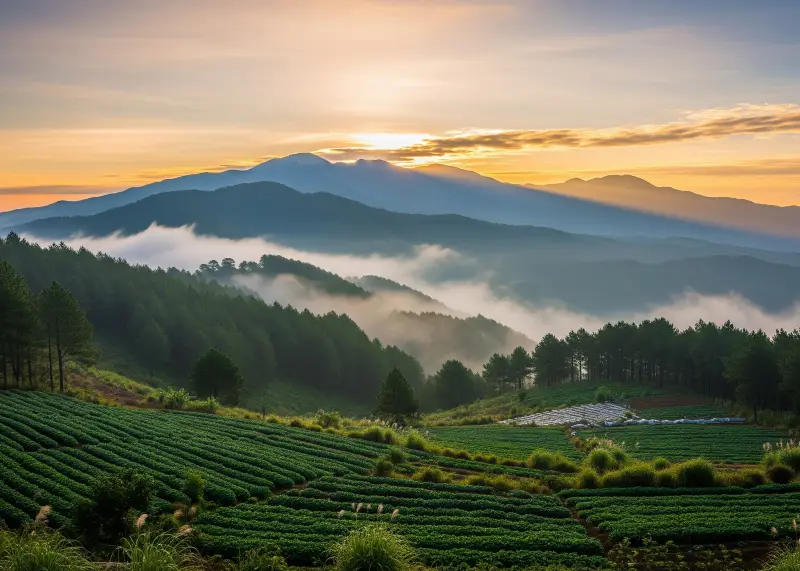
Mt. Kitanglad Range (Bukidnon)
Recognized as a UNESCO Biosphere Reserve, the Kitanglad Range is a sanctuary for biodiversity and indigenous culture. Its peaks, including Mt. Dulang-Dulang (the country’s second-highest mountain), are cloaked in mossy forests that feel like stepping into another world. The Talaandig tribe, who call this land sacred, often conduct rituals before climbs, making the trek not only about nature but also about cultural respect. Hikers often describe the range as “hauntingly beautiful” – a place where you can truly feel small amid towering trees and sweeping ridges.
Mt. Hamiguitan (Davao Oriental)
A UNESCO World Heritage Site, Mt. Hamiguitan is globally recognized for its pygmy forest, where trees grow only a few feet tall due to the unique soil and elevation. The mountain is also home to rare and endangered species like the Philippine eagle and pitcher plants. Treks here usually last 2–3 days, offering both challenging climbs and moments of wonder as you pass through landscapes unlike anywhere else in the country. For conservation-minded travelers, Hamiguitan is proof that Mindanao’s wild spaces are treasures not just for the Philippines, but for the world.
Lake Holon (South Cotabato)
Often called “the Crown Jewel of South Cotabato”, Lake Holon is a crater lake formed within Mount Parker. Accessible via scenic treks from the towns of T’boli or Kule, the lake is a pristine escape where silence reigns. The T’boli people act as stewards and guides, rowing visitors across the emerald waters in wooden boats. Camping by the lakeshore is a surreal experience – at night, the stars reflect off the water, and in the morning, mist rolls in like a scene from a dream. Many hikers describe the journey to Holon as a spiritual reset, where nature slows life down to its essentials.
When a group of college students from Cagayan de Oro hiked Lake Holon, they were stunned by the silence. No traffic, no phones buzzing – only the sound of paddles slicing through the water. “It was the first time we realized what ‘disconnect to reconnect’ really means,” one said. Moments like these are why Mindanao’s trails are so unforgettable.
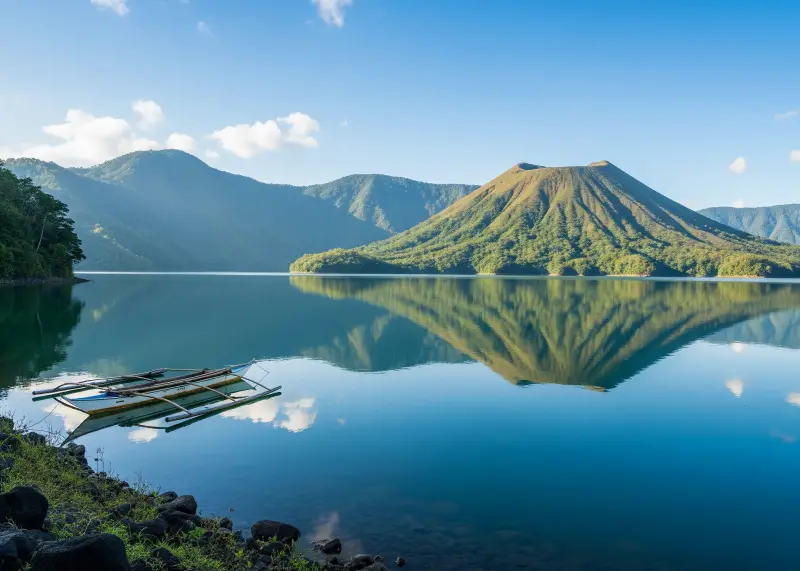
Mt. Matutum (South Cotabato)
Standing at 2,286 meters, Mt. Matutum is a striking, cone-shaped volcano visible from miles away. It is a sacred mountain for the B’laan tribe, and climbing it usually requires permission from tribal elders – making the hike a culturally immersive experience as well as a physical challenge. The trail is steep but rewarding, with panoramic views of South Cotabato’s plains and neighboring mountains. Many hikers pair the climb with visits to nearby pineapple plantations, giving the trip a unique “farm-to-summit” twist.
Mt. Malindang Range (Misamis Occidental)
A less-traveled destination, the Mt. Malindang Range Natural Park offers rugged terrain, waterfalls, and hidden lakes. It’s considered one of Mindanao’s most underexplored hiking treasures, with multiple trails leading to different peaks and crater lakes. Birdwatchers also flock here, as the range is a haven for endemic species. Because it’s less commercialized, hiking in Malindang feels raw – perfect for adventurers who want solitude on the trail.
Tinuy-an Falls & Enchanted River (Surigao del Sur)
Though not mountains, these natural escapes deserve mention alongside Mindanao’s hiking destinations. Tinuy-an Falls, often dubbed the “Niagara Falls of the Philippines,” cascades in three layers, making it both a trek and a visual marvel. Just an hour away lies the Enchanted River in Hinatuan, famous for its surreal blue waters. Both sites involve short hikes, making them great add-ons for travelers seeking nature without committing to multi-day treks.
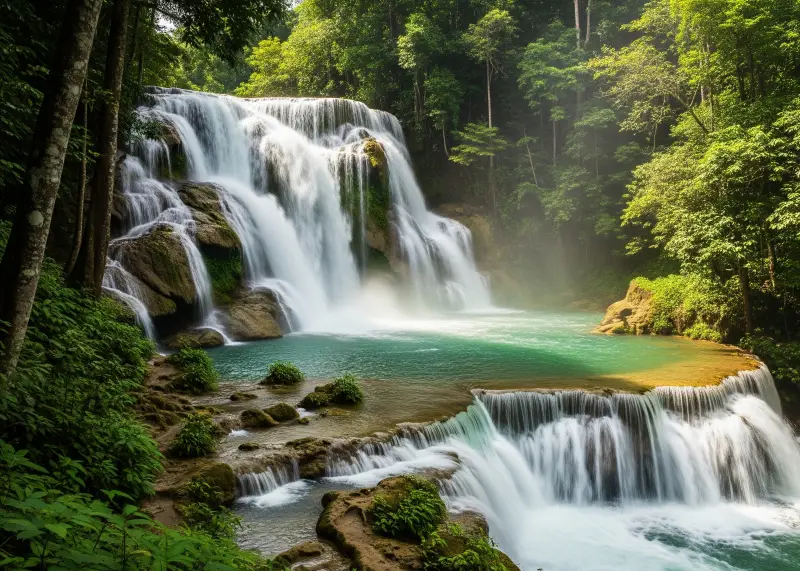
Why Hiking in Mindanao is Different
Hiking in Mindanao isn’t just a physical pursuit – it’s a mental detox and often a cultural encounter. Trails here are less crowded compared to Luzon hotspots like Batulao or Pulag, giving you space to breathe and reflect. Local guides, often from indigenous communities, don’t just lead the way – they share stories, traditions, and even rituals that connect hikers to the land. For many, the journey up Mindanao’s mountains becomes as much about listening and learning as it is about climbing.
🍲 Mindanao Food Trips
Food in Mindanao is as diverse as its people. If Luzon is known for adobo and Visayas for lechon, Mindanao brings something entirely different to the Filipino table.
-
Satti (Zamboanga): A spicy breakfast dish of grilled meat skewers served with rice soaked in a sweet-spicy sauce.
-
Pastil (Maguindanao): Steamed rice topped with shredded chicken or beef wrapped in banana leaves – a popular budget-friendly meal.
-
Curacha with Alavar Sauce (Zamboanga): Deep-sea crab paired with a rich, coconut-based sauce that locals fiercely guard as a culinary treasure.
-
Durian and Marang (Davao): Fruits that spark endless debates – loved for their flavor, feared for their smell.
Table 1: Regional Food Highlights
| Region | Must-Try Dish/Drink | Why It’s Special |
|---|---|---|
| Zamboanga | Satti & Curacha | Spicy, unique, Arab-influenced |
| Maguindanao | Pastil | Affordable, filling street food |
| Bukidnon | Fresh Pineapples | Export quality, sweet and juicy |
| Davao | Durian & Marang | Exotic fruits that define the region |
| Cotabato | Kakanin delicacies | Rooted in indigenous traditions |
Eating in Mindanao is an adventure in itself. As one traveler said after her first taste of Pastil in Cotabato: “It was simple food, but it tasted like history wrapped in a leaf.”
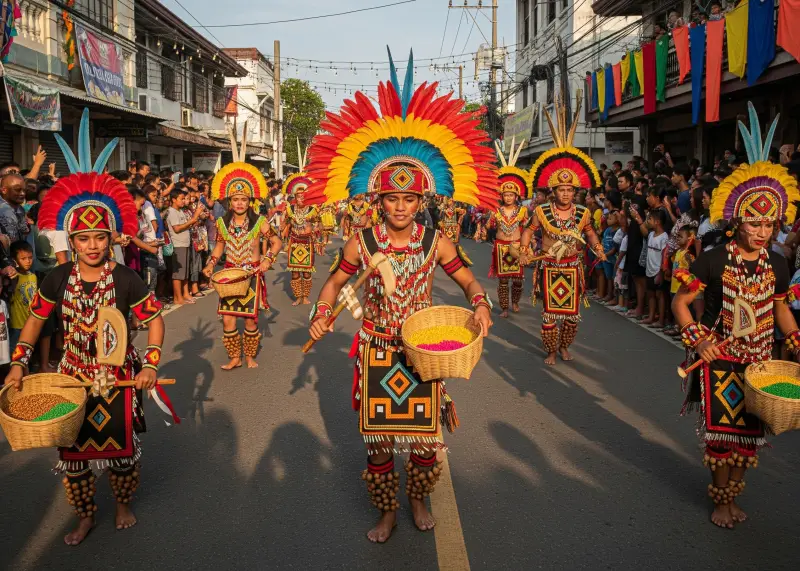
🎭 Festivals and Culture
If there’s one thing Mindanao knows how to do, it’s celebrate. Festivals here aren’t just about parades – they’re living expressions of history and identity.
-
Kadayawan (Davao): A thanksgiving festival for bountiful harvests.
-
Higalaay (Cagayan de Oro): A mix of street dancing, civic parades, and food fairs.
-
Kalimudan (Sultan Kudarat): A gathering of tribes showcasing traditional dances and rituals.
-
Kaamulan (Bukidnon): A unique cultural festival celebrating the indigenous peoples of the province.
During these festivals, visitors can join street dances, taste traditional food, and even witness rituals passed down for generations. The vibrant costumes, rhythmic chants, and symbolic movements often leave first-time attendees in awe.
🌊 Adventures Off the Beaten Path
Mindanao isn’t only about beaches and festivals. Travelers seeking more adventure can:
-
Go whitewater rafting in Cagayan de Oro River, a thrilling ride for adrenaline junkies.
-
Explore the Enchanted River in Hinatuan, Surigao del Sur, famed for its deep blue hues.
-
Visit Tinuy-an Falls (Surigao del Sur), nicknamed the “Niagara Falls of the Philippines.”
-
Dive in Samal Island, where rich marine biodiversity awaits underwater explorers.
A tourist once described diving in Samal as “like stepping into another world – schools of fish shimmering like silver curtains while corals stretched endlessly.” These hidden gems remind travelers that Mindanao’s beauty isn’t just on land but also underwater.
Frequently Asked Questions (FAQ)
Is Mindanao safe for tourists?
Yes, most parts of Mindanao are safe, especially popular destinations like CDO, Bukidnon, Davao, Camiguin, and Surigao. Travelers should still exercise common sense and check government advisories before visiting remote areas.
How do I travel between cities in Mindanao?
Mindanao has airports in major cities and an expanding network of buses and vans. Flights between Davao, Cagayan de Oro, and Zamboanga are frequent, making it easier to cover multiple destinations.
When is the best time to visit Mindanao?
The dry season, from December to May, is the best time for outdoor activities. However, festivals are held year-round, so timing your visit with one can add to the experience.
Do locals speak English or Tagalog?
Yes, most locals can speak basic English and Filipino, but many also proudly use their native tongues like Bisaya, Tausug, or Maguindanaon. This adds cultural depth to interactions.
What food should I not miss in Mindanao?
Pastil, satti, curacha with Alavar sauce, and durian are top picks. Each region has specialties, so food-tripping is highly recommended.
Are there eco-tourism initiatives in Mindanao?
Yes, many. From turtle conservation in Dahican to eco-tours in Bukidnon farms, eco-tourism is growing and provides sustainable income for locals.
Can I backpack in Mindanao on a budget?
Absolutely. With affordable meals (₱30–₱70 for Pastil or carinderia food) and low-cost accommodations, Mindanao is backpacker-friendly.
What’s a good itinerary for a week?
A sample route could be: CDO for rafting → Bukidnon for Mt. Kitanglad or Kaamulan → Davao for food and culture → Mati for beaches → Surigao for Tinuy-an Falls and Enchanted River.
Beyond the Map: Why Mindanao Leaves a Mark
Traveling in Mindanao isn’t just about ticking destinations off a bucket list – it’s about immersion. You’ll meet locals who invite you into their homes for a meal, guides who tell you ancestral legends, and strangers who treat you like long-lost family. The mix of landscapes, cultures, and flavors is so rich that most visitors leave with a renewed respect for the island’s diversity.
For years, Mindanao was painted with broad strokes of fear and uncertainty. Today, it’s proving itself to be one of the most rewarding travel frontiers in the Philippines. If you’ve only seen Davao and Siargao, you’ve barely scratched the surface. The real Mindanao is waiting – raw, authentic, and unforgettable.



